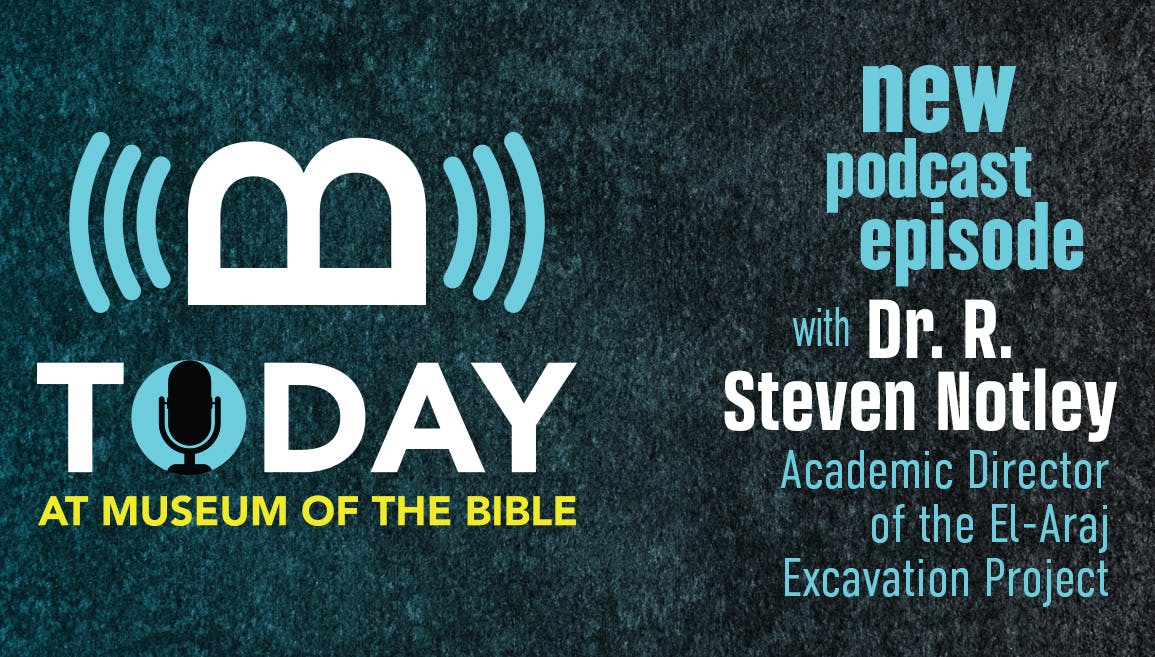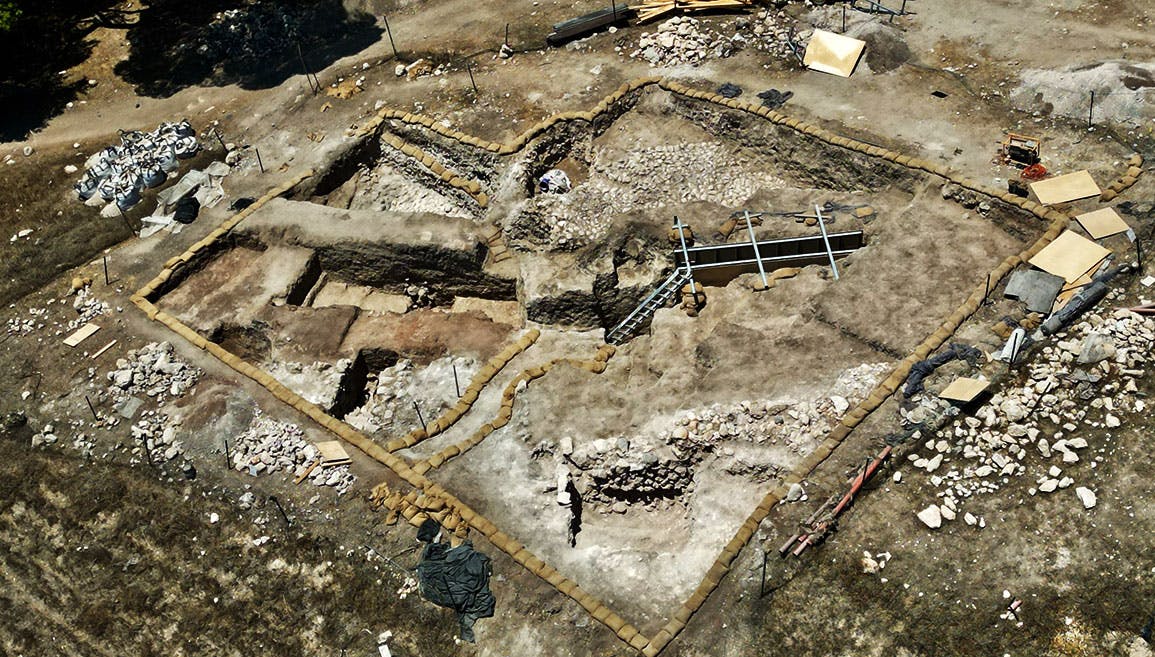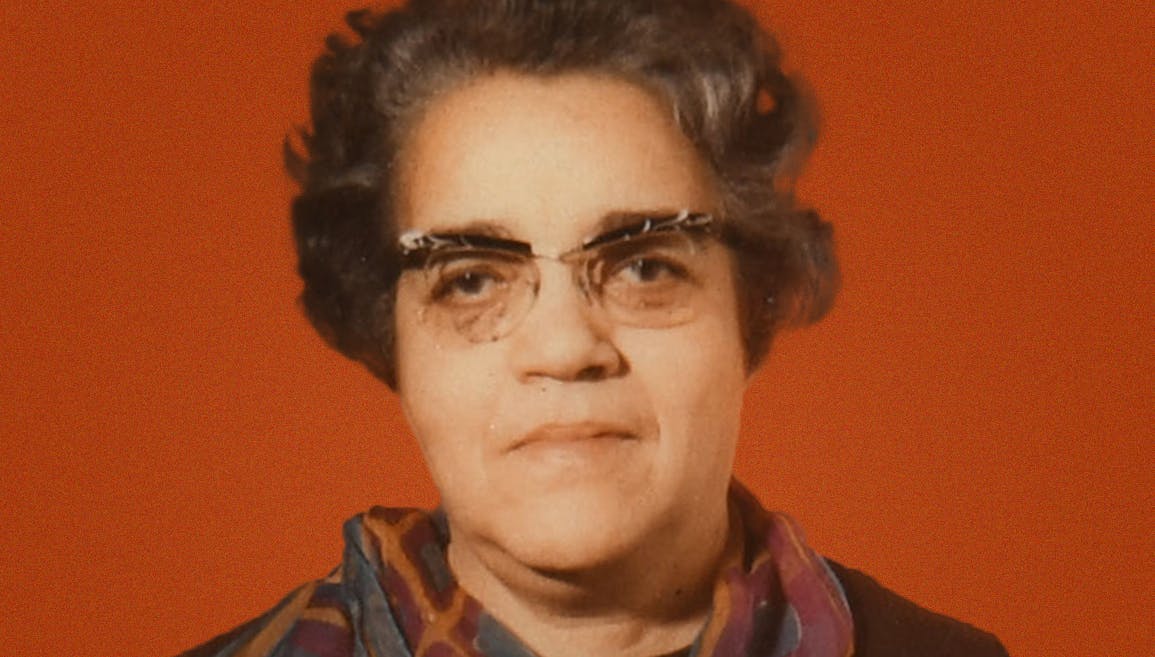From the Podcast: Updates from El-Araj Excavation Site with Dr. R. Steven Notley

On our podcast, Charlotte Clay, director of marketing and communications, and Dr. Jeff Kloha, chief curatorial officer, interviewed Dr. R. Steven Notley, professor of New Testament and Christian origins at Alliance University (formerly Nyack College) and the academic director of the El-Araj Excavation Project in Israel. Learn more about this ongoing excavation project, sponsored in part by Museum of the Bible, on our Research page, in our magazine, and on past episodes of our podcast.
The following interview has been edited for clarity and space. To get the full interview, listen using the video player above or listen to the episode on our podcast, Today at Museum of the Bible, or on our YouTube channel.
Jeff Kloha: Steve, you were here last February and gave an update on the excavations at el-Araj from 2022. Here we are nine months later, and you’ve been in the dirt a bit more. What can you tell us about this last summer?
Steven Notley: We excavated for two weeks, end of July and the beginning of August. We're functioning now on a four-week dig, but we dig in the summer and then we come back and dig in October when the water levels are down—allows us to dig down deeper, in terms of the Roman period. But this summer, most of our focus was on the questions related to the Byzantine church.
Also, I was tasked with excavating under the apse and places where the mosaics had already been destroyed by crusaders. So, when there were areas that were bare, one of our interesting questions is what’s underneath the church? Are there earlier Roman period (i.e., New Testament period) structures, houses there? We would assume so because they're all around, so we assume under the church as well. And so we were digging through the apse and then down, finding some interesting structures there, which the archaeologists are calling ancient walls, which means probably Roman period. No coins have been found yet, no pottery, so the actual dating of it we'll have to wait and see. I'll resume that in another week when I'm back starting to dig again for another month. But there seems to be some structures under the apse, so we're interested to see what that is. Usually, an apse is the most sacred area in a church, in a basilica. Sometimes you may find relics or various things that identify the tradition of that particular church. So, to find a structure underneath the apse and when the identity of the church [is that it’s] built over the house of Saint Peter, it raises lots of interesting questions. Again, it's a bit premature to sort of speak with any kind of certainty. But these are the kinds of things that are drawing us to explore underneath.
Charlotte Clay: What’s the potential significance of this church and why would a church be rebuilt over another in the same location?
Steven: My suspicion is that the earlier church is part of an early program of building churches. We have testimony and patristic sources, early church fathers. We have a bishop in Cyprus, Epiphanius, who talks about Joseph of Tiberias, a Jewish believer. He was there, and he requested from Constantine the emperor permission to build churches because they didn't really have churches before the Byzantine period. So he requested the opportunity to build churches, and it speaks about him getting permission to build churches in various places. It seems like that church, with some others, may be part of that program in the fourth century to mark important sites in the Gospels.
This excerpt is from an episode of Today at Museum of the Bible. Listen to the whole interview on Spotify, Google Podcasts, Apple Podcasts, iHeart Radio, YouTube, or wherever you get your podcasts.


